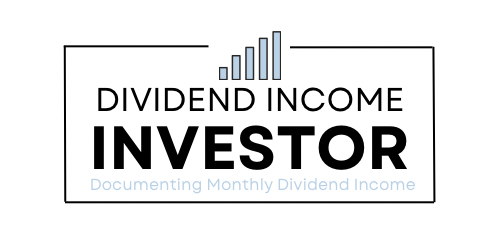Financially Stable: financial stability means you don’t worry about money and are confident with your financial situation. Set yourself up.
Everyone knows money is a taboo subject around the dinner table.
But does anyone ever stop to wonder why that is?
It’s likely that people don’t want to talk about money because they’re not financially stable.
Because once you achieve financial stability, there’s nothing to hide.
In this post, I will look at what financial stability is and how to achieve it.
Let’s take a look.

Financially Stability: What is it?
Financial stability means you have a good financial situation.
It means you have enough money to pay your bills, but you still have extra money left over for saving and spending.
Being financially stable means you have no debt, and you have reasonable expenses compared to your income.
It does not mean you are rich, but you have some savings for retirement and emergencies.
Furthermore, it means you are moving towards financial security and financial independence. You make disciplined financial decisions to improve your situation in the future.
Just imagine not worrying about bill payments or emergencies. Imagine being debt free and having more career options, because income is not the primary focus. Picture yourself being able to purchase a Playstation 5 anytime you want, because you have the extra money. These are all benefits of being financially stable.
Essentially, financial stability means you don’t worry about money and are confident with your overall financial situation.
What Financially Stable Looks Like
- Basic needs are met.
- Bill payments are all made on time.
- Have a buffer amount of money left over after expenses.
- Able to save at least 10% of income.
- Debt free.
- Reasonable expenses compared to income.
- Independent adult.
What Financially Stable does Not look like
- Occasionally short on groceries.
- Sometimes bill payments are late.
- Live paycheck to paycheck.
- Credit card debt.
- Outlandish purchases compared to income.
- Not saving any money.
- Over spending.
- Asking other adults to help you financially.
How to become Financially Stable
Although it is a process that takes time, it is relatively simple to become financially stable.
To become financially stable, you only need to focus on these six simple steps:

1. Earn Stable Income
The first thing you need to become financially stable is income.
Because if you don’t earn your own income, you still rely on others to support you. That’s the furthest from financial stability there is.
Anyways, obtain a job that pays a stable income to begin.
It doesn’t have to be your dream job yet, you can worry about that when you are financially stable.
For now, just find a job that pays enough to pay your bills.
2. Budget
It’s nearly impossible to maintain financial stability without a budget, unless you are a natural cheapskate.
So, learn how to budget to keep track of your income and expenses.
It will help you understand how much money you need to earn, and it will guide your spending.
3. Maintain Reasonable Expenses Compared to Income
This is a simple one that most people fail with.
Usually, the moment someone receives a raise, they decide to buy a new car.
Without even doing the math, they automatically assume the raise will cover the extra cost.
Suddenly, they find themselves with even less money after the raise…
Fortunately, this kind of financial mess can be easily avoided.
Here is how…
Spend less than you earn.
It’s really that simple.
Don’t sign up for things that cause you to spend more than you earn.
Set up maximum spending amounts on housing, food, and transportation based on your budget.
Then never exceed your budget!

4. Pay off Debt
It’s hard to become financially stable if you have debt, because payments and interest are always eating into your money.
Debt takes away from how much you can spend or save in the future.
Debt is demoralizing, which is the exact opposite of financial stability. Financial stability is about having confidence in your financial situation.
As such, all debt must be eliminated.
5. Pay Yourself First at least 10% of Your Income
Even having a small sum of money saved, like a few pay checks worth, changes your outlook on life.
It provides options and a safety net.
In turn, you become a more stable and calm individual because you are prepared.
It’s empowering to know you have additional options in any situation.
6. Have an Accessible Emergency Fund
Part of your savings should go to a long-term retirement account.
But a portion of your savings should go to an accessible emergency fund.
I use a high interest savings account.
By having an accessible emergency fund, you protect money that is invested for the long term and avoid going into debt.
It’s very comforting to know you have money available in case of an emergency.
It’s the ultimate peace of mind.
Personally, I pay myself first 1% of each pay into an emergency fund. It doesn’t sound like much, but it adds up over the years.

Financially Stable – Final Thoughts
If you stay within the above guidelines for long enough, you will become financially stable.
In summary,
- Earn stable income.
- Budget.
- Maintain reasonable expenses compared to income.
- Pay off debt.
- Pay yourself first 10% of your income.
- Have an accessible emergency fund.
If you keep expenses relatively low compared to income, eliminate debt, and put aside 10% of your income, within a few years, you will achieve financial stability.
At which point, you will no longer have to worry about money. There won’t be any tight times for money or late bill payments. If you really want something, you will be able to afford it.
Perhaps you will be able to jump in on those dinner conversations about money.
Related
How to Budget – 7 Simple Steps to Build a Successful Budget
Pay Yourself First – How to Pay Yourself First
Student Loan Debt: (11) Practical Ways to Quickly Pay It Off
I am not a licensed investment or tax adviser. All opinions are my own. This post may contain advertisements by Monumetric. This post may also contain internal links, affiliate links to BizBudding, Amazon, Bluehost, and Questrade, links to trusted external sites, and links to RTC social media accounts.
Just so you know:

Connect with RTC
Pinterest: @reversethecrushblog
Instagram: @reversethecrush_
Facebook: @reversethecrushblog
Email: graham@reversethecrush.com


 DRIP Stock: (DRIP Stock Meaning) + Are DRIP Stocks a Good Investment?
DRIP Stock: (DRIP Stock Meaning) + Are DRIP Stocks a Good Investment?
